Subfamily Tadorninae Scientific name Tadorna radjah Rank Species | Phylum Chordata Genus Tadorna Higher classification Shelduck | |
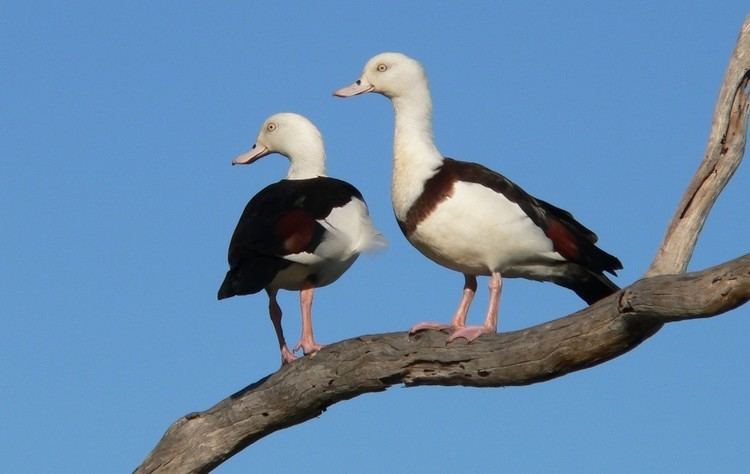 | ||
Similar Bird, Shelduck, Australian shelduck, Green pygmy goose, Plumed whistling duck | ||
Burdekin duck or radjah shelduck tadorna radjah at fogg dam nt australia mp4
The radjah shelduck (Tadorna radjah), is a species of shelduck found mostly in New Guinea and Australia, and also on some of the Moluccas. It is known alternatively as the raja shelduck, black-backed shelduck, or in Australia as the Burdekin duck.
Contents
- Burdekin duck or radjah shelduck tadorna radjah at fogg dam nt australia mp4
- Radjah shelduck bird watching in australia with ej birdwatching
- Taxonomy
- Description
- Distribution and habitat
- Behaviour
- References
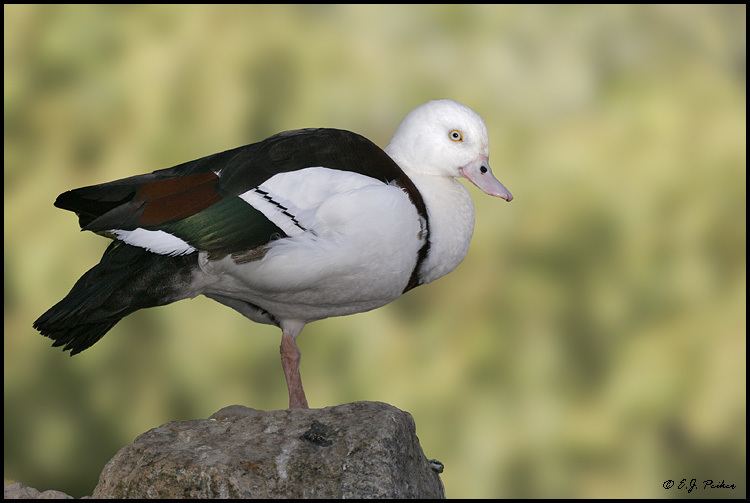
Radjah shelduck bird watching in australia with ej birdwatching
Taxonomy
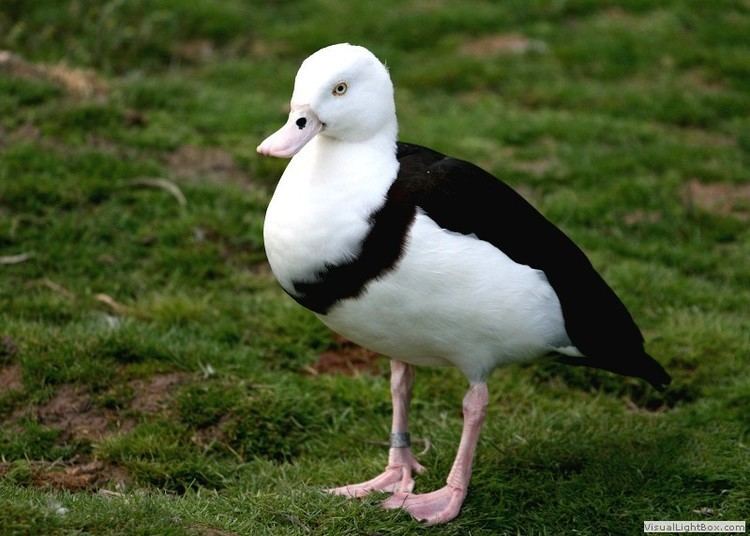
Placed in the genus Tadorna, it differs markedly in external morphology, and mtDNA cytochrome b sequence data suggests its status should be reinvestigated. The genus name Tadorna comes from Celtic roots and means "pied waterfowl", essentially the same as the English "shelduck".
Description
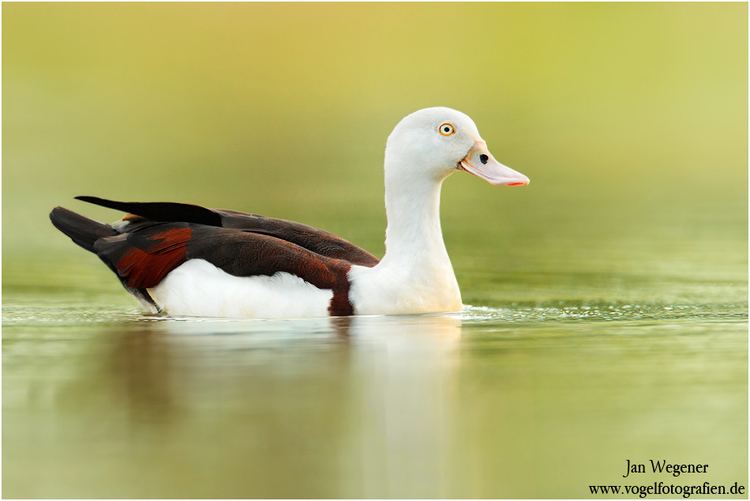
Both the male and female of the species are mostly white, with dark wing-tips and a distinctive "collar" of dark feathers. Seen from above in flight the birds have green bands on the tops of their wings. The female has a harsh rattle and the male has a breathy, sore-throat whistle.
Distribution and habitat
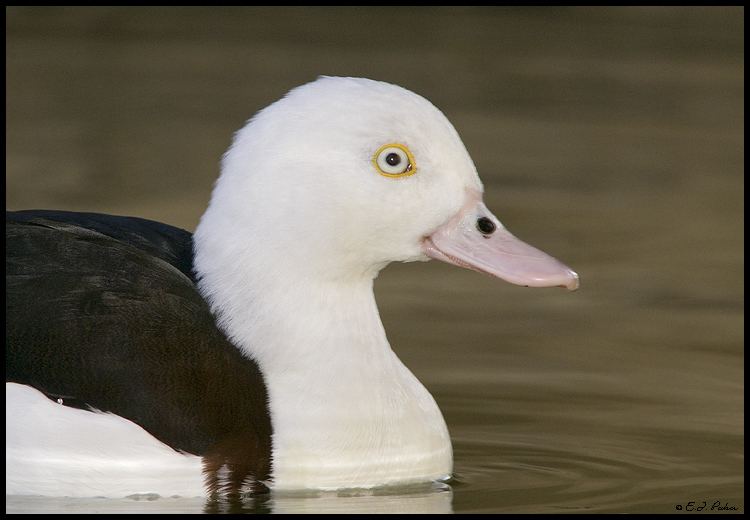
The radjah shelduck inhabits the mangrove forests and coastline of New Guinea (Indonesia and Papua New Guinea) and Australia, and some of the Moluccas in eastern Indonesia. In Australia, its primary range is coastal tropical northern Australia, from central Queensland through northern Northern Territory (including Kakadu National Park) to the Kimberley in Western Australia. The radjah shelduck is listed as a protected bird in all states of Australia and penalties exist for harming or disturbing them.
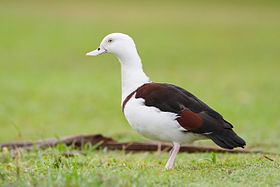
The species prefers the brackish waters of mangrove flats and paperbark tree swamps, but will visit freshwater swamps, lagoons, and billabongs further inland during the wet season.
Behaviour
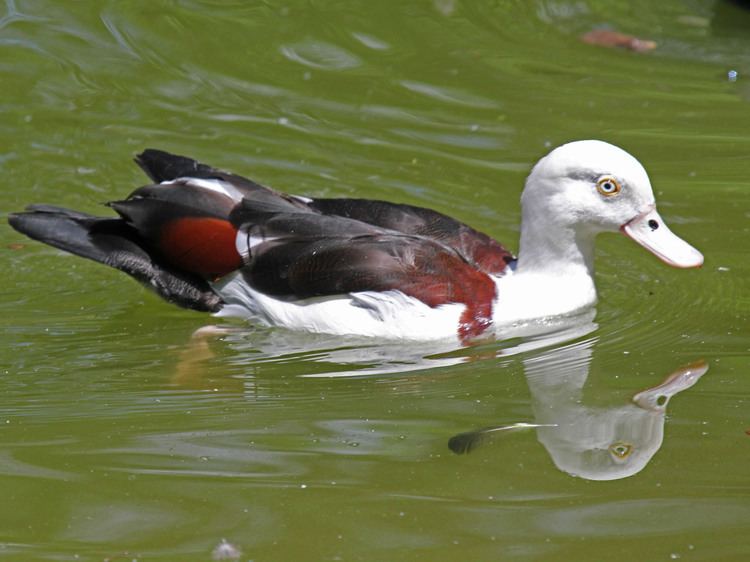
The radjah shelduck forms long-term pair-bonds, and is usually encountered in lone pairs or small flocks. During the wet season the males commonly become very irritable, and have been observed attacking their mates.
The diet consists mainly of mollusks, insects, sedge materials and algae. Pairs start searching for nesting sites during the months of January and February. They nest close to their primary food source, often in the hollow limbs of trees, which makes habitat destruction a particular issue.
The radjah shelduck does not use nesting materials except for some self-supplied down feathers. Egg-laying is usually done by May or June, but depends on the extent of the wet season. The clutches range from 6 to 12 eggs. Incubation time is about 30 days.
